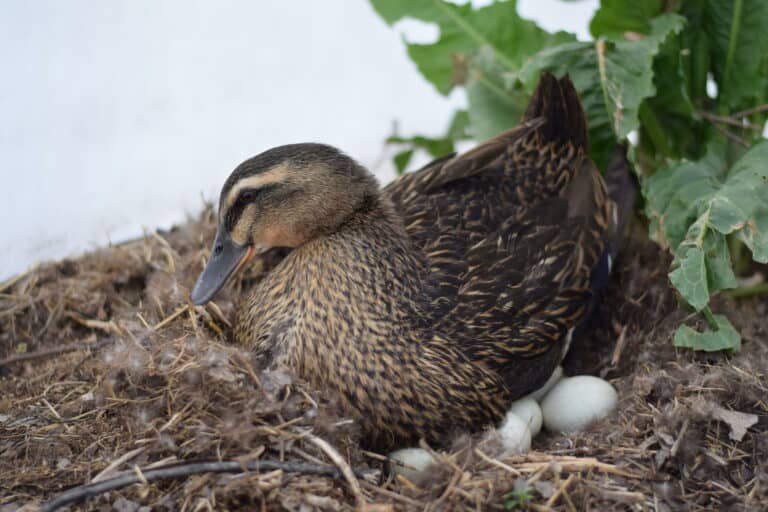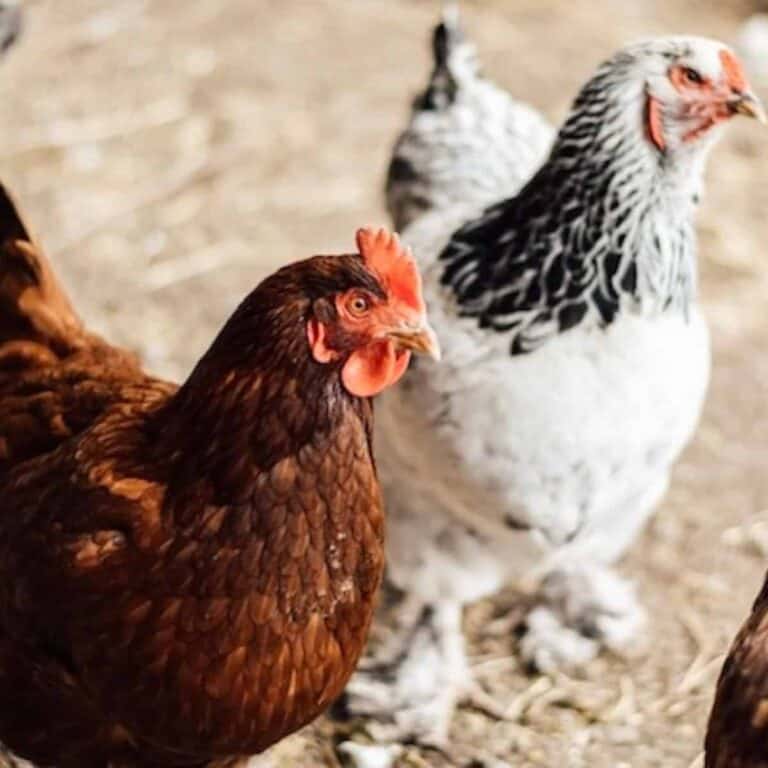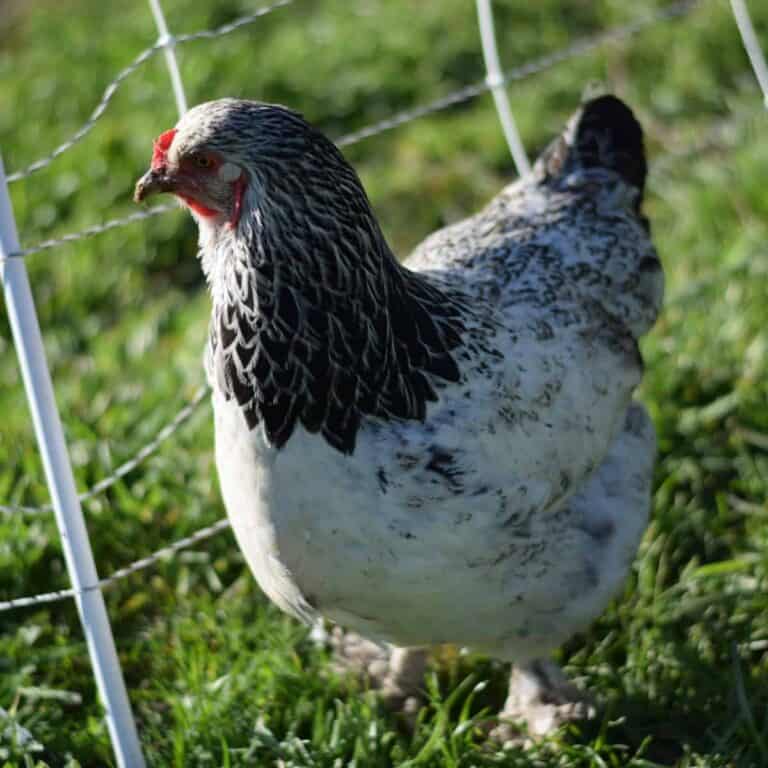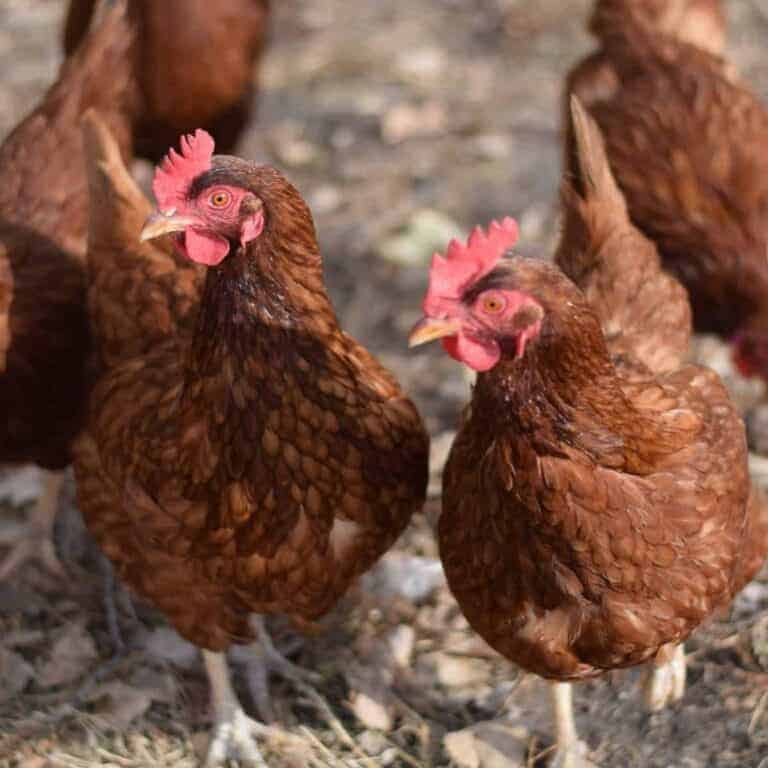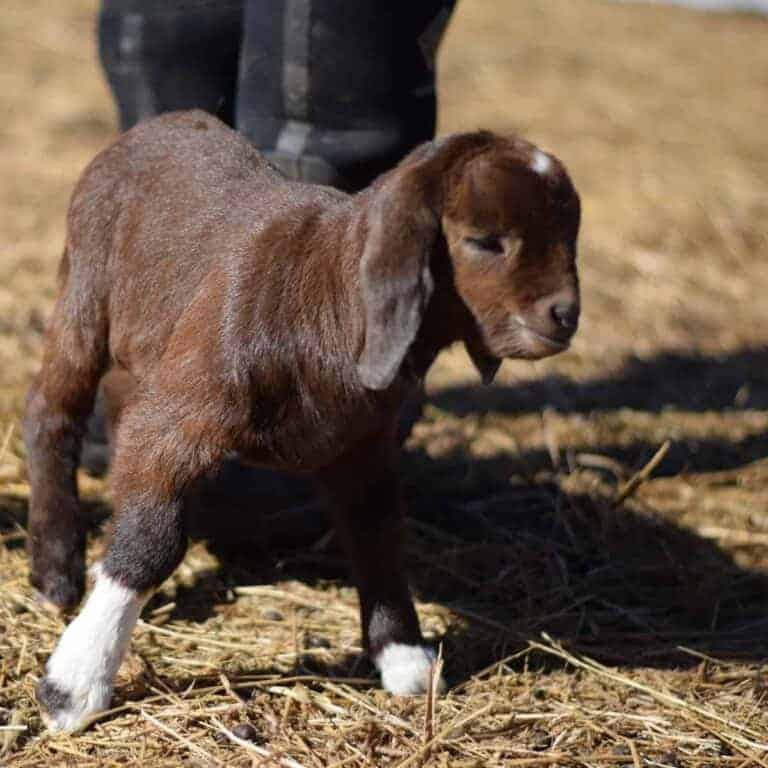9 Best Chickens for Colorful Eggs
What are the best chickens for colorful eggs? In this post we will review the top 9 breeds that will give you a multi-colored egg basket.
Chickens can lay many different colors of eggs including white, brown, chocolate, speckled, green, blue, pink and a even a purple-ish color. Egg color is determined by the breed of the chicken. And, while there are many different egg colors each breed or individual chicken will only lay one color of egg for their entire life.
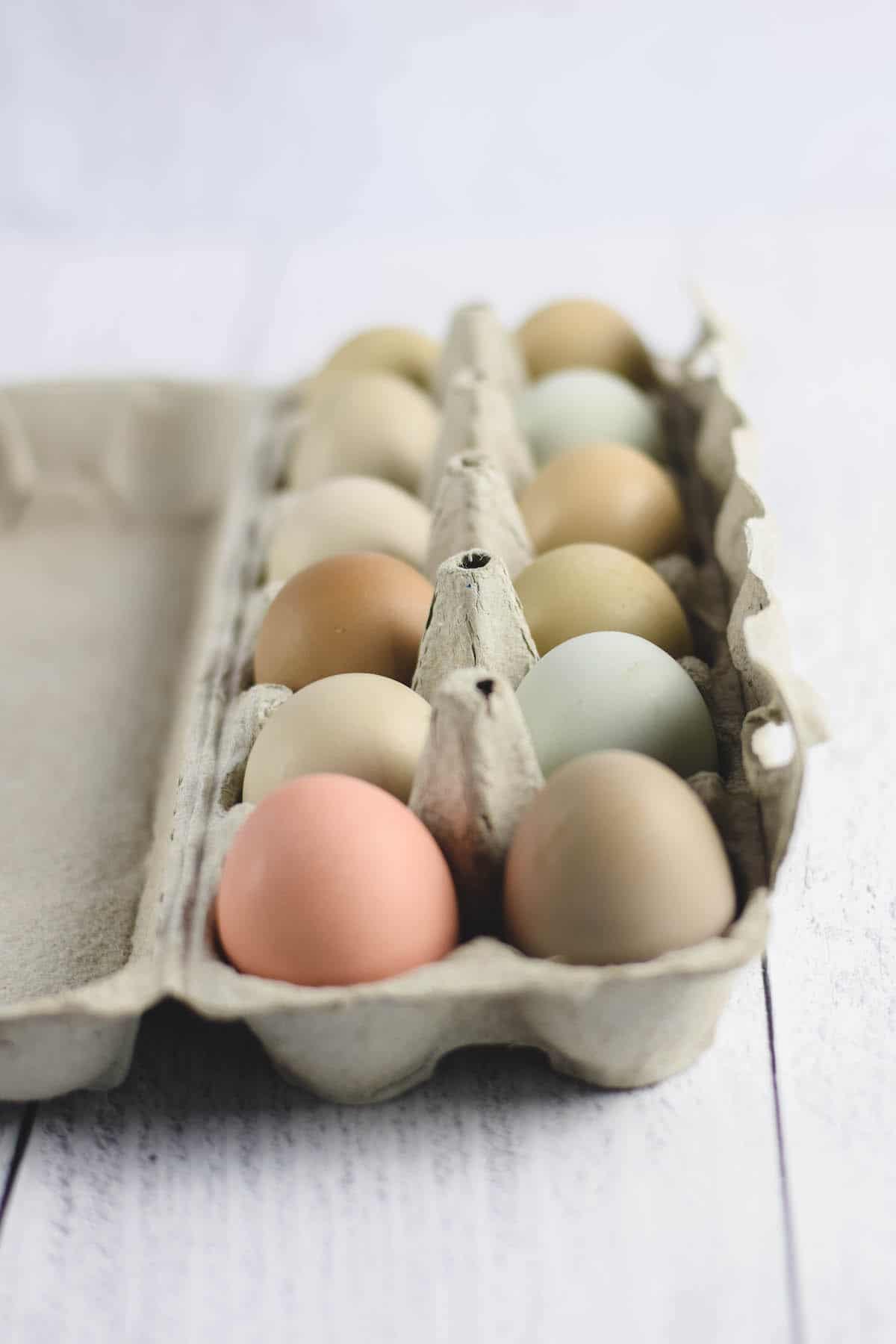
Chickens that lay colored eggs
One thing that you may take into consideration when choosing the perfect chicken breeds for your needs is what color eggs they will lay. While we all probably know that chickens can lay white or brown eggs, the fact is that they can lay several other colors as well.
Through the years of raising chickens, we have had a lot of fun with keeping a variety of hens that lay different colored eggs. Not only are they aesthetically pleasing, the children get a lot of joy in finding the different colored eggs.
If you’re looking for chickens to give you a colorful egg basket, we’ve got you covered. Let’s dive into these breeds a little more in depth.
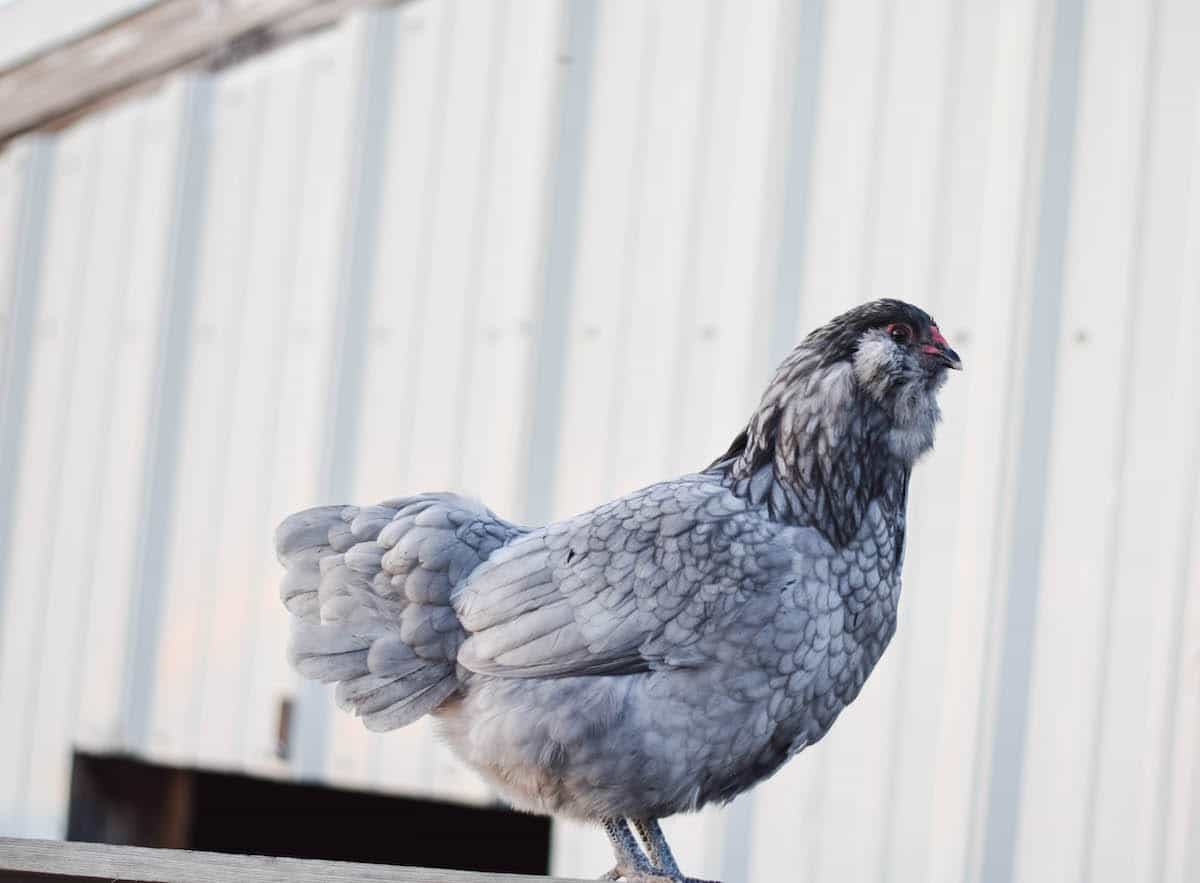
Ameraucana
Ameraucanas are a chicken breed which lay a medium sized blue egg about 3 times per week. So, in total they will give you around 150 blue eggs per year. Additionally they tend to be cold hardy, so typically lay a little better through winter than some other breeds will. Being cold hardy also makes their winter care a little easier.
They are a medium sized bird that tends to be both friendly and docile. In our experience, they tend to have quite unique personalities which make them fun to watch and interact with.
They come in a whole variety of colors including, blue, black, splash and wheaten. And they have cute muffs and beards which make their faces look poofy.
One thing to note about this breed is that they are sometimes confused with Araucanas or Easter Eggers. And you sometimes will see Easter Eggers labeled as Americana or some other spelling which leads people to believe they are getting a pure bred Ameraucana when they are not.
Araucana
Araucanas are a relatively rare breed. They lay around 150 medium sized blue eggs per year. And as most pea combed breeds are, they are cold hardy. Which means that they will lay well through the winter.
This breed is not very common and can be difficult to find. They are very unique in their appearance. They have tufts of feathers which fan out from their cheeks and they are rumpless. One of the reasons they are a more rare breed is that the gene which causes their tufts is also lethal and they can therefore be much more difficult to breed.
They do come in a variety of cool colors such as Gold & SIlver Duckwing, Black Red and White.
Cream Legbar
The third blue egg layer on our list is the Cream Legbar. They tend to lay a slightly higher number of eggs per year than the first two breeds. With Cream Legbars, you can expect around 180 medium sized blue eggs per year. They are both heat and cold hardy making them good year round egg layers.
They come in a few different color varieties all of which have a barring pattern on them: silver, gold and cream. However, there is also a Frost White Legbar (sometimes viewed as a different breed) which is completely white and also lays medium sized blue eggs. They also have little crests on the top of their heads.
Cream Legbars have fun little personalities which do tend to vary from bird to bird. And they are also great foragers. However, if free ranging isn’t always the safest thing for your flock. But it can be nice to let them wander around with supervision.

Easter Egger
Easter Eggers are hybrid chickens, meaning that they are a mix of two different chicken breeds. However, there is not a certain set of two breeds that make up an Easter Egger.
Due to the fact that there is not a standard set of breeds to create these chickens, they do tend to have variation from chicken to chicken. The vast majority of easter eggers consist of a brown or chocolate egg layer bred with a blue egg layer. And, typically this results in green egg laying chickens.
However, that is not the case all the time. Some Easter Eggers will lay blue, light pink or brown eggs also. This perhaps makes them the ultimate chicken that lays colored eggs since you can get a variety of different colors just by getting a few of this breed.
Most Easter Eggers tend to be fairly friendly and they are certainly a great pet chicken breed.
Isbar
Isbars are fantastic layers of medium to large sized green eggs. They can easily lay 200 or so eggs per year. They do well in both cold and hot weather which makes them good year around layers.
This breed is very rare, so you will have to find a specific breeder to get some for your flock. They come in blue, black and splash color varieties and have a single comb. They are superb foragers, however they also tolerate confinement well if you have predator issues and need to keep them in a smaller area.
Marans
Marans are a French breed that lays large chocolate colored eggs. They typically lay around 3 eggs per week. Their chocolate color can be extremely dark and is usually rated on a numbered scale up to 9. Their eggs can sometimes be a little speckled, especially if they are lighter colored layers and if they are towards the end of their laying season.
Marans come in a large variety of colors, but not all colors are recognized by the APA. White, Wheaten and Black Copper are the most common and accepted colors.
One unique feature (in addition to their colored eggs) is that they have feathered legs and feet. There are not a ton of chicken breeds that have leg feathering.

Welsummer
Welsummers also lay a large chocolate egg. In general, their eggs do not tend to be as dark as a Marans egg. Some Welsummers eggs have a lot of speckling as well. They are very good layers and tend to lay over 200 eggs per year.
Welsummers are a really beautiful bird, but only come in one color – red partridge. They tend to do well in both heat and cold. Even though they do well in both climates, it is always important to be sure you keep your chickens cool in the summer and warm in the winter.
Welsummers are intelligent and friendly birds and make a great addition to a flock if you are looking for a fun bird to watch as well as one that will give you dark chocolate eggs.
Penedesenca
Like both Marans and Welsummers, the Penedesensca also lays dark chocolate eggs. And, they will also start out very dark and grow lighter as the season progresses. Typically after molting, they will go back to their darkest egg color once again.
They lay around 150 -200 medium sized eggs per year. This breed is fairly heat hardy, however, they do not do well in the cold.
One feature Penedesencas have that no other breed on this list does is that they have a carnation comb. This comb type is very similar to a single comb, however it has two protrusions on the back of the comb.
Croad Langshan
Croad Langshans are a fairly rare breed which lays a brown egg that sometimes appears purple. The “purple” color of their eggs is created by a bloom which is deposited on top of the egg when they lay it. Not all of them will have as intense of a bloom and sometimes their eggs simply look light brown or light pink.
They typically lay around 150 or so large eggs per year.
This breed is a rather heavy breed that come in blue, black and white colors. They tend to be friendly and easy to care for.
🖤 Favorite hatcheries for ordering chickens
There are many options of ordering chickens. You can sometimes find them locally for sale by breeder or farmer, or through the farm stores like Bomgaars, Orschelns, Tractor Supply, or whatever your local farm supply store is.
And you could even order the eggs and hatch them yourself!
I know that there are many wonderful places to order chickens from online, so I don’t want to discredit anyone. However, I want to share the top places that I order from with great success.

FAQ (frequently asked questions)
Most chicken breeds that are super high producing egg layers lay a white or sometimes a brown egg. These are breeds such as Leghorns, Deathlayers aka Westfalische Totleger, Rhode Island Reds, Australorps and Orpingtons. However, there are a few hybrids that have been developed which mix one of these high production birds with a colored layer to get a high production colorful egg layer. An example of this would be Super Blue Egg Layers.
On average chickens will start to lay around 5 or 6 months of age. However, this is highly breed dependent. Some can start laying younger, like in the 4 month range and others can take up to 9+ months.
There can be a variety of reasons that your chickens have either stopped laying or decreased the amount of eggs in which they are laying. Some of the reasons are related to health issues such as lice, mites, stress or respiratory illness. Another reason which is health related, but not an actual illness is molting.
Additionally, the time of year and the amount of sunlight available can also cause a decrease in the amount of eggs they lay. Chickens need a bare minimum of 12 hours of light to make eggs, however 14 -16 hours is optimal.
Egg color has absolutely no affect on the taste or flavor of eggs. All eggs actually start out white and what creates other colors is deposits of pigment during egg laying.
where would you like to start?

Kristin – Guest Author
Hey, I am Kristin. Along with my husband, Justin, we run MrAnimal Farm. Our love of animals has helped to grow our farm over the years. Our homestead goals have always been to live the ways we want while having our homestead pay for itself. We have been fortunate to achieve those goals plus some and now we love to pass along the way we have learned to others who also want to have a well organized and profitable homestead.
Connect with Kristin:





